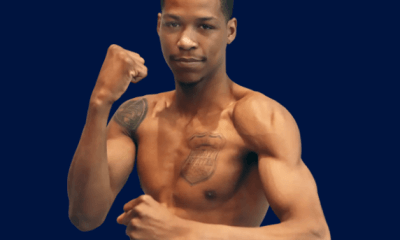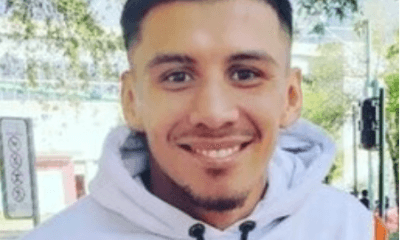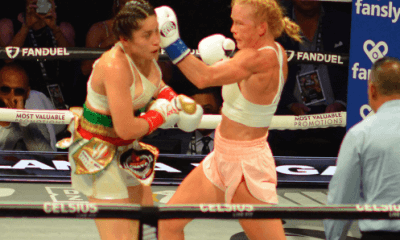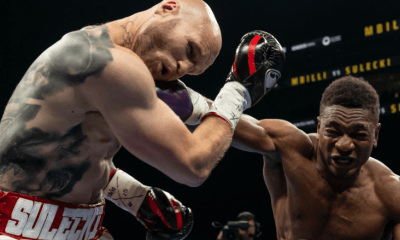Featured Articles
Don King’s Return to Atlantic City Made for a Press Conference Unlike Any Other
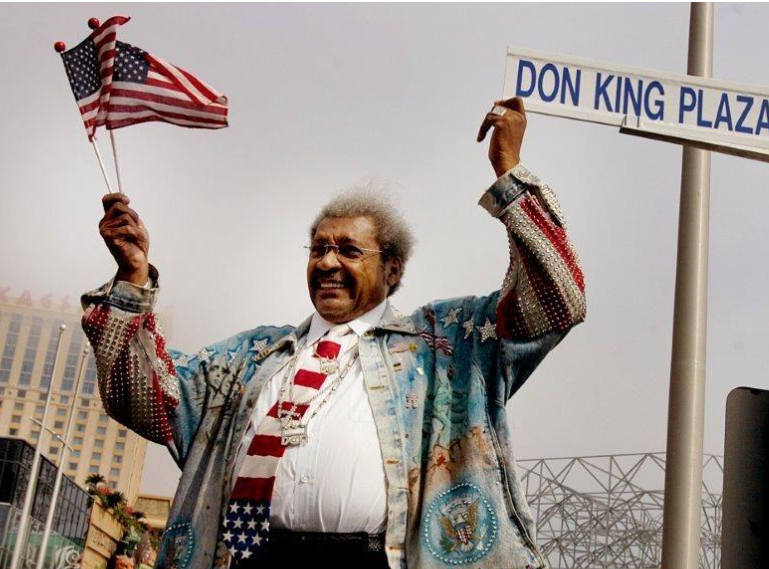
23 years ago today, on Dec. 5, 1998, Johnny Tapia challenged WBA bantamweight champion Nana Yaw Konadu of Ghana at the brand-new Atlantic City Convention Hall. The details of the fight have faded from my memory, but not so the bizarre pre-fight press conference in which bombastic promoter Don King, returning to Atlantic City after an eight-year enforced absence, so dominated the podium that he completely overshadowed the main event, a matchup misleadingly billed as Tapia’s first East Coast ring appearance.
After finally getting his turn to hype a bout that seemingly was more of an excuse for having King’s “I’m back!” press conference, a perplexed Tapia, who two nights later would go on annex Konadu’s title on a 12-round majority decision, told reporters, “I don’t understand this. I mean, I’m the one who’s fighting, right?”
Well, yes, that would be technically correct. But Tapia, a recent and ultimately temporary addition to the DKP stable, really should not have been all that surprised by being cast in the role of setup man to the publicity-loving impresario with the electrified hairdo. It generally was standard procedure for King fighters, before stepping up to the microphone to discuss their upcoming bout, to dutifully pledge fealty to someone who immodestly liked to call himself “the world’s greatest promoter.”
Even if the embattled King was in the process of losing some his most marketable attractions, most prominently Mike Tyson, Julio Cesar Chavez and Felix Trinidad (Chavez and Trinidad would return to the fold), his supporters saw the end of his nearly-decade-long legal fight with the federal government as a triumph worthy of celebration.
“Don was found to be guilty without a trial by individuals in Atlantic City,” said Showtime executive Jay Larkin, now deceased, whose premium-cable company televised Konadu-Tapia and the co-featured pairing of newly crowned WBA welterweight champion James Page and top-ranked Jose Luis Lopez. “It was wrong. You can’t be denied the right to make a living while you’re under indictment.”
Earlier in 1998, King found himself under federal indictment for the third time in the decade. As still another court battle dragged on, boxing’s premier cash cow, Tyson, filed a $100 million lawsuit against King in March, claiming that DK had illegally siphoned 50% of Tyson’s estimated $150 million in earnings since the former heavyweight champion’s release from prison. Not only that, but Chavez had gone over to King’s arch-rival, Top Rank founder Bob Arum, and Trinidad signed with Dino Duva, citing a rollover clause in his contract with King that had rendered his services to something akin to indentured servitude.
But when the feds threw up their hands and surrendered after so many attempts to nail their quarry for insurance fraud, King stopped playing defense. And he would initiate his counterattack in Atlantic City, site of some of his greatest triumphs and also of his most stinging rebuke.
“I am like Lazarus coming out of the belly of the whale like Jonah, because you can’t cook with cold grease,” he harrumphed during a lengthy diatribe in which he quoted, among others, Thomas Jefferson, St. Thomas Aquinas, Henry Ford and Henry David Thoreau. “You got to turn on the stove.
“I’m not a whiner, I’m a winner. My thought was to work within the system to clear my name, which is what has happened. Who knows, maybe something good will come from this. Maybe an unreasonable situation will be corrected for those who come after me. Maybe the rule will be revisited, reassessed and eradicated, and removed from their books because of what happened to me. The only way you can cure evil is to expose it to the light of day. That’s why I’m back. I’m back to let New Jersey see the kind of fights I can put on here.”
In retrospect, the multi-part federal case against King now appears to be a thin beef. Larkin was correct, at least in one respect; without the justification of a conviction, New Jersey had scant legal grounds to ban someone under indictment from continuing to do business within the state’s borders.
Konadu-Tapia marked King’s first Atlantic City card, or anywhere in New Jersey, since he staged Tyson’s one-round blowout of the late Alex Stewart on Dec. 8, 1990. For hardcore fight fans, the “first” East Coast visit by Tapia – not so, given that the Albuquerque, N.M., native had outpointed Andy Agosto in Pompano Beach, Fla., on Dec. 13, 1997 – should have been sufficient enough reason to draw a respectable crowd of 6,124. But having King back in town was like the circus setting up shop again near the Boardwalk if not on it (the then-new Convention Center, which is not attached to a casino, never staged another boxing card), with King its largest elephant and loudest carny sideshow barker.
“It’s good to be a total American again,” continued King, then 67 and still full of sass and vinegar. “This is like a homecoming. It’ll be like a pep rally for me. When your presumption of innocence is denied, you can throw bricks, but that changes nothing. I’m sensitive now to the fact an allegation can end your existence in New Jersey. That’s why I got to go back to work.”
An embittered Tyson has continued to cite what he says were his legitimate grievances against King, but Chavez eventually mended fences with him and Trinidad’s father announced that his son, after his contract with King was upheld, elected to sign a new $42.9 million, four-year deal with the controversial promoter just a week prior to Konadu-Tapia. Not that King seemed overly worried that those who jumped ship permanently or temporarily couldn’t be replaced.
“I made all these guys with my promotional talents,” he bragged. “I can do it again for somebody else.”
Check out more boxing news on video at the Boxing Channel
To comment on this story in the Fight Forum CLICK HERE
-

 Featured Articles3 weeks ago
Featured Articles3 weeks agoAvila Perspective, Chap. 330: Matchroom in New York plus the Latest on Canelo-Crawford
-

 Featured Articles2 weeks ago
Featured Articles2 weeks agoVito Mielnicki Jr Whitewashes Kamil Gardzielik Before the Home Folks in Newark
-

 Featured Articles4 weeks ago
Featured Articles4 weeks agoAvila Perspective, Chap 329: Pacquiao is Back, Fabio in England and More
-

 Featured Articles3 weeks ago
Featured Articles3 weeks agoOpetaia and Nakatani Crush Overmatched Foes, Capping Off a Wild Boxing Weekend
-

 Featured Articles2 weeks ago
Featured Articles2 weeks agoCatching Up with Clay Moyle Who Talks About His Massive Collection of Boxing Books
-

 Featured Articles4 weeks ago
Featured Articles4 weeks agoFabio Wardley Comes from Behind to KO Justis Huni
-

 Featured Articles1 week ago
Featured Articles1 week agoMore Medals for Hawaii’s Patricio Family at the USA Boxing Summer Festival
-

 Featured Articles4 weeks ago
Featured Articles4 weeks agoDelving into ‘Hoopla’ with Notes on Books by George Plimpton and Joyce Carol Oates

